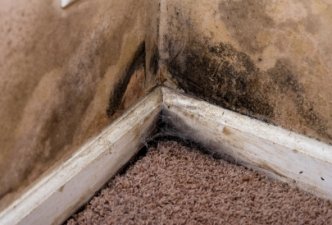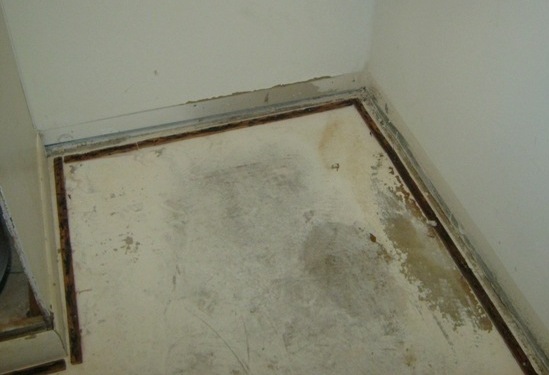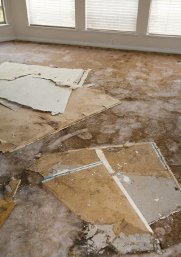Find a Mold Specialist Now
Click or Call, Toll-Free 24/7
Carpet Water Damage Mold
Carpet water damage mold and black mold in carpet can develop anytime your carpet has become wet and stayed wet for a while without the opportunity to dry out thoroughly. If your home had some flooding and the carpet was damp for more than 24 hours, you probably have some mold in your carpets. Mold in your home carries many health risks and can be a great deal of work to clean up.
Health Risks of Stachybotrys Chartarum
Black mold, technically known as Stachybotrys chartarum, carries many known health risks, which is why you don’t want it in your carpet. Health risks of black mold in your carpet include:
- difficulty breathing
- frequent respiratory infections
- asthma attacks
- development of asthma in people previously not diagnosed with the condition
- coughing
- sneezing
- itchy, watery eyes
- headaches
- depression
- fatigue
- trouble concentrating
Health risks of Stachybotrys chartarum are of greater concern for some people than others. Infants, young children and the elderly are at increased risk for health problems. So are pregnant women, anyone with a history of respiratory problems like asthma and people with compromised immune systems, such people with HIV or AIDS.
Cleaning up Black Mold in Carpet

Once carpet water damage mold has taken hold, there’s often no cleaning it up. You can shampoo your carpet but that won’t remove all the mold. Additionally, if the carpet has been wet for more than 48 hours, the floor and padding beneath the carpet probably have mold as well. This is another of those situations in which you can attempt the clean up on your own but would be wise to call in a professional to handle the job for you.
Remediation Procedures - Carpet Water Damage Mold
Mold spores and bacteria naturally exist in settled dust, especially in carpets. When carpets get wet, the water and existing dust, dirt, hair, fibers, skin cells, food crumbs, bug parts, etc in the carpet provide the necessary food and moisture for the mold and bacteria to grow in the carpet. Once mold starts to grow in the carpet, then mold odors start to become discernible in the room.
Carpeting that gets wet during a flood (for example) may be salvageable if the carpet is quickly (within 48 hours) dried. Carpets can be dried using dehumidification and water extraction equipment to remove the moisture in the carpet. This equipment can usually be rented.
After the carpet is dried, then the carpet can be cleaned by thoroughly HEPA vacuuming the carpet to remove the mold spores and bacteria in the carpet.
If more than 48 hours pass before the carpet is dried, then mold will likely have started to grow into the carpet fabrics. If the carpet gets wet again or the carpet is exposed to elevated levels of moisture/humidity, then mold growth and related odors will likely recur.
If the carpet is an area rug, then the carpet can be placed outdoors in the direct sunlight during the warm/hot months of the year to dry the carpet. The sun’s UV rays will also kill some of the mold and bacteria. However, the area rug still needs to be thoroughly HEPA vacuumed before it is re-installed.
In accordance with IICRC (Institute of Inspection, Cleaning, and Restoration) guidelines, water-damaged carpets should be removed and disposed of, including the padding beneath the carpeting. The flooring beneath should be inspected for mold growth.
Below is a picture of moldy tack strips that were under carpeting.
Safety
When disposing of contaminated carpets, make sure you wear personal protective equipment including an N-95 face mask. Also make sure the work area is completely isolated from the rest of the house so that the nearby rooms do not become contaminated with mold when you are removing the moldy materials from the work area.
Fixing Any Leaks
Of course, you’ll also need to fix any leaks or sources of moisture that allowed the carpet to suffer damage in the first place or you’ll just end up with black mold in carpet again and again. Look for leaky roofs, pipes, leaks around door or window frames, or places condensation may build up on cooler outside walls. If you’re not sure where the moisture is coming from, call in a professional for a free assessment of the area.
You can hire a professional to handle the entire task if you want, but even if you decide to try doing the job yourself we recommend you consult with a licensed mold remediation contractor. A professional will give you a free assessment, recommendations, and valuable advice along with their estimate. They may also find some additional mold you didn’t even know was in your home. You can follow this link to get a list of local Mold Removal Specialists in your area.
If you have any questions about the remediation process for carpet water damage mold, please write to us. To learn more about the health effects of black mold in carpet, just follow the link.
Return From Carpet Water Damage Mold To Our Black Mold Health Symptoms Home Page
Additional Resources:






